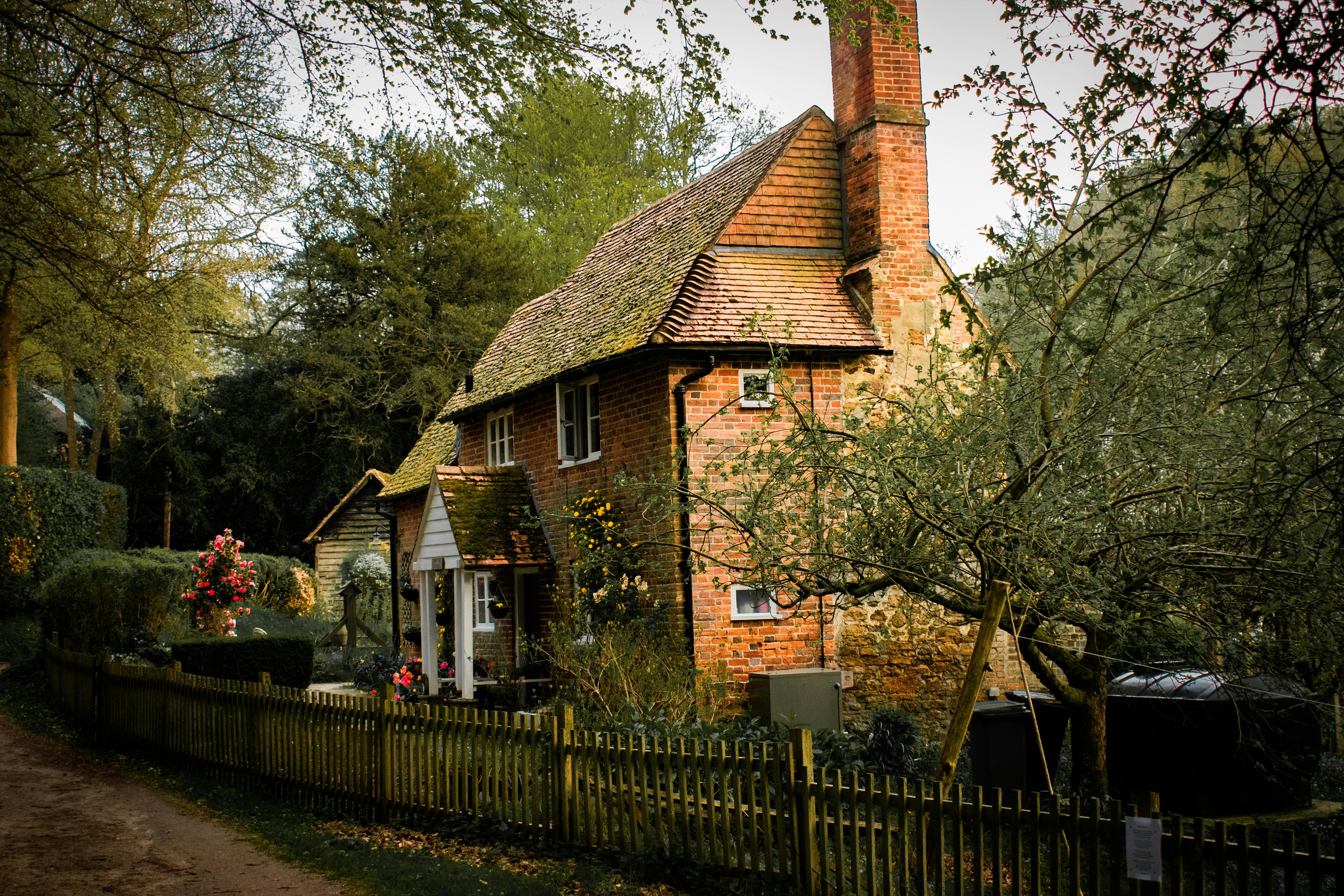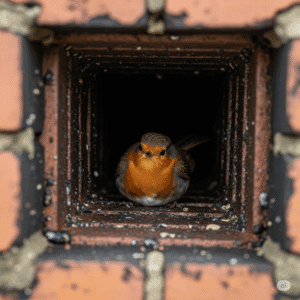How Long for a Bird Stuck in a Chimney to Die? A Humane Guide (2025)
It’s a sound that’s both perplexing and deeply distressing: a frantic flapping, scratching, or panicked chirping coming from the one place in your home you never expect to hear life—your chimney. Discovering a trapped animal is always upsetting, but when it’s a delicate bird, a sense of urgency takes over. Your immediate concern is for the animal’s welfare, which quickly leads to the grim but necessary question: how long for a bird stuck in chimney to die?
As a certified chimney professional and humane wildlife control operator, I get this call frequently. Homeowners are worried, and rightly so. The answer isn’t a single number; it’s a somber calculation based on a harsh reality. A chimney is a dark, vertical trap with no food, no water, and no easy way out. The survival timeline depends heavily on the bird’s size, its health, and the conditions inside the flue.
This comprehensive guide will walk you through the harsh realities a bird faces, the survival timeline you can expect, how to identify the signs of a trapped bird, and most importantly, a safe, step-by-step plan for rescue. We will also cover the crucial final step: how to ensure this never, ever happens again.

The Grim Timeline: Factors Affecting a Trapped Bird’s Survival
A chimney is one of the most hostile environments a bird can encounter. Understanding the specific threats it faces helps clarify the urgent need for action.
Dehydration & Starvation (The Primary Threats)
This is the most critical factor. A chimney is a desert. Without access to water, dehydration sets in rapidly. For a small songbird, this can be fatal in as little as **48 to 72 hours**. Starvation is a parallel threat. Birds have incredibly high metabolisms and need to eat constantly to fuel their energy. With no insects or seeds, their energy reserves are depleted quickly.
Size, Species, and Metabolism
The type of bird makes a significant difference in the timeline.
- Small Birds (Sparrows, Finches, Wrens): These birds have the fastest metabolisms and the smallest reserves. They are the most vulnerable and often succumb to the combined effects of stress, exhaustion, and dehydration in **2 to 4 days**.
- Medium Birds (Starlings, Pigeons): Larger birds have more resilience. A pigeon might survive for **up to a week, sometimes longer**, especially if there’s any residual moisture in the chimney. However, this is a period of intense suffering.
- Special Case – Chimney Swifts: These birds are unique. They are specially adapted to cling to vertical surfaces inside chimneys and often nest there. They are protected by the Migratory Bird Treaty Act, making it illegal to remove them or their nests during nesting season. If you hear constant, high-pitched chittering, you may have a nest of swifts. In this case, you must call a wildlife professional.
The Chimney Environment (The Unseen Dangers)
The flue itself is a hazardous space. Soot and creosote can coat a bird’s feathers, making flight difficult or impossible. Inhaling these particles can cause severe respiratory distress. Furthermore, the temperature inside a chimney can swing wildly, becoming a sweltering oven in the summer sun or a frigid trap in the winter, drastically shortening survival times.
Exhaustion and Injury
A bird’s instinct is to fly up toward the light. However, most chimney flues are too narrow for them to get the necessary lift to fly straight up. They repeatedly try to escape, hitting the walls and falling back down. This cycle leads to severe exhaustion and potential injuries like broken wings, which makes escape impossible and survival unlikely.
Are You Sure It’s a Bird? Recognizing the Telltale Signs
Early detection is the key to a successful rescue. Listen and look for these common indicators:
- Flapping & Scratching Noises: This is the most common sign. The sounds may be frantic and loud at first, then become intermittent as the bird tires.
- Chirping or Distressed Calls: You might hear squawking or soft chirps. If you hear constant, high-pitched chittering from multiple sources, it’s likely a nest of babies.
- Falling Debris: Small bits of soot, mortar, or nesting material falling into your firebox is a clear sign of movement above.
- A Sudden Foul Odor: If the noises have stopped and are replaced by a deeply unpleasant smell, the bird has likely perished. This unfortunately requires a removal and decontamination process.
The Humane Rescue Plan: A Step-by-Step Guide for Birds in the Firebox
If the bird has made it all the way down to your fireplace (firebox), a rescue is often straightforward. Your goal is to provide a calm, clear path to freedom.
- Prepare the Room: Close all doors to the room to contain the bird. If there are interior doors (like French doors), close them. Shut all blinds or curtains except for on one large window or a single door that leads directly outside.
- Turn Off the Lights: The room should be as dark as possible. The bird will be naturally drawn to the single source of bright, natural light from the open window or door.
- Protect Your Hearth: Lay down a drop cloth or old sheet in front of the fireplace to catch any soot or droppings. Put on a pair of sturdy gloves and safety glasses.
- Open the Damper: Reach into the fireplace and fully open the damper (the metal flap inside). If there are glass fireplace doors, open them slowly and quietly.
- Wait Patiently and Quietly: Step back and leave the room if possible, or stand quietly in a far corner. Give the bird time. Frightened and possibly disoriented, it may take a few minutes to see the clear escape route you’ve created. In most cases, it will fly directly toward the light and out of your home.

Safety First: Heavy-Duty Leather Work Gloves
Before attempting any rescue, protect your hands. A panicked bird can peck or scratch, and your fireplace is a dirty environment. These durable leather gloves will provide the protection you need.
View on AmazonWhen to Immediately Call for Professional Help
The DIY method is only for the simplest scenario. You should call a professional chimney sweep or a local wildlife rescue organization if:
- The bird is stuck high up in the flue and cannot get down.
- You suspect it’s a protected species like Chimney Swifts.
- The bird appears obviously injured or is not moving.
- You are uncomfortable performing the rescue for any reason.
Professionals have tools like inspection cameras to locate the animal and specialized equipment to retrieve it safely without causing harm to the bird or your chimney.
The Aftermath: Cleanup and Decontamination
Once the bird is free (or has been removed), your job isn’t quite done. Bird droppings and nesting materials can carry bacteria and fungi, such as Histoplasma, which can cause respiratory illness in humans. A thorough cleanup is essential.
For a small amount of debris in the firebox, you can clean it yourself while wearing a mask and gloves. For anything more substantial, or if a nest was involved, a professional cleaning is the safest option. A chimney sweep will use the best chimney sweep vacuum systems with HEPA filtration to contain all hazardous dust and ensure your system is clean and safe to use.
The Permanent Solution: How to Bird-Proof Your Chimney for Good
A rescue is a temporary fix. Prevention is the permanent solution. You must secure your chimney to ensure no other animal has to endure this fate.
The Non-Negotiable: Install a Chimney Cap
This is the single most effective way to prevent animals from entering your chimney. A chimney cap is a metal cover that attaches to the top of your flue. It has a solid top to block rain and mesh sides that allow smoke to escape while forming an impenetrable barrier to birds, squirrels, and other wildlife. It’s a modest investment that saves animals’ lives and protects your chimney from water damage.
A cap is also the first line of defense against larger animals. It’s far easier to install a cap than to figure out how to get a raccoon out of your chimney.

The Essential Upgrade: Shelter Bolt-On Chimney Cap
This is your permanent solution. Made of heavy-gauge steel, this cap bolts directly to your flue liner, providing a secure barrier against all animals and weather. It’s the best investment you can make for your chimney’s health and local wildlife safety. Be sure to measure your flue before ordering.
View on AmazonThe Importance of Annual Inspections
An annual inspection by a CSIA-certified chimney sweep is crucial. They can spot and fix structural issues that might allow animal entry. They will check for cracks in the crown, deteriorating brickwork that needs the best mortar for chimney repair, and other vulnerabilities. This inspection is also critical for your home’s safety and can be important for insurance purposes, so it’s wise to know if your homeowners insurance covers chimney repair. They’ll even inspect the full exterior, ensuring things like your best chimney antenna mount are secure.
Frequently Asked Questions (FAQ)
What if I find a nest of baby birds in my chimney?
If you suspect a nest of Chimney Swifts or any other species, your best and legal course of action is to wait. Call a wildlife rehabilitator for advice. They will likely tell you to leave them alone until the babies are old enough to leave the nest on their own (fledge), which usually takes a few weeks. After they have left, you must have a cap installed immediately.
Will a trapped bird eventually find its own way out?
It is extremely unlikely. The vertical, narrow structure of a flue is a near-perfect trap. The bird will almost certainly perish from exhaustion, injury, or dehydration without intervention.
What does it cost to have a bird removed professionally?
Costs can vary, but for a simple removal, you can typically expect to pay between $150 and $350. If a nest is involved or the situation is complex, the cost may be higher. Many wildlife rescue organizations offer their services for free or for a donation.
Conclusion: A Call for Compassion and Prevention
The question of “how long for a bird stuck in a chimney to die” is a hard one, but it forces us to confront a preventable tragedy. While the timeline is short and grim, your quick and compassionate action can lead to a successful rescue. The ultimate responsibility, however, lies in prevention. By installing a chimney cap, you are closing the door to this suffering for good.
Your chimney should be a conduit for warmth and comfort, not a trap for unsuspecting wildlife. Let’s make sure it’s secure for everyone, including the only visitor who should be making a planned trip down—and even he has other options now, as many wonder how does Santa get in without a chimney!
